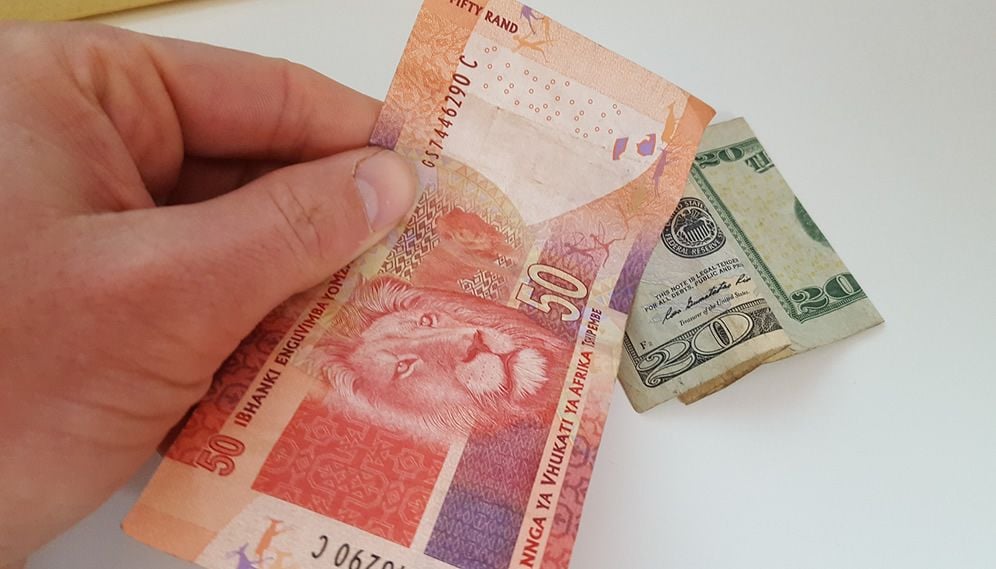SARB Rate Cut Ends South African Rand's Rally Against the Pound, More Cuts Seen Coming

The South African Reserve Bank (SARB) cut interest rates by 0.25% at their rate meeting on Thursday, shaving the base lending rate from 7.0% to 6.75%.
The Pound to Rand exchange rate (GBP/ZAR) rose from the 1.1670s to the 1.1690s in the minutes after the meeting as the Rand weakened. The pair had been falling back from highs at 17.00 so the rate cut appears to have arrested the downmove.
The USD/ZAR peaked at 13.06 and EUR/ZAR rose to 15.20.
Currencies tend to fall when their central banks cut rates - particularly when the move is unexpected - as it reduces demand from international investors seeking to park their money where they can achieve the highest returns.
South Africa commands a heavy interest rate that many global investors find desirable and it is why foreigners are a major funder of the South African financial system.
Although markets were ‘surprised’ by the SARB's move, they shouldn’t have been in hindsight argues Standard Chartered Economist Razia Kahn.
“Growth is slowing; the economy entered a technical recession in Q4-2016,” said Kahn, adding:
“Despite expectations of positive mining, manufacturing and agriculture growth in Q2, recovery prospects are weak, and political risk is still significant.”
A sharp fall in inflation from 5.9% to 4.8% in only 7 months was another strong reason for the rate cut.
The SARB themselves revised average inflation forecasts down to 5.3% and 4.9% for 2017 and 2018, from 5.7% and 5.3% earlier, making it “inappropriate” for them not to cut rates, said Kahn.
Get up to 5% more foreign exchange by using a specialist provider. Get closer to the real market rate and avoid the gaping spreads charged by your bank for international payments. Learn more here.
Nevertheless, there will be those who say the SARB caved in to political will.
The SA public prosecutor recently said the SARB should change its mandate away from currency and inflation rate management to a more overtly growth orientated mandate, although she latter withdrew the proposal.
Some within the ANC government also want the SARB to be nationalised.
The SARB was generally more dovish about global growth than the market consensus and did not expect Central Bank’s globally to raise accommodative interest rates or cut stimulus as soon as currently projected.
The European Central Bank (ECB) on July 21 warned that it was not yet ready to reduce stimulus to the Eurozone economy and appeared to have slowed down the pace of normalisation somewhat.
The ECB did not change its statement on policy, which was a, “cut and paste job” in the words of one analyst, despite expectations that it might delete the phrase saying it would consider increasing the scope and pace of QE if conditions worsened.
The SARB also said: “the gradual nature of the planned balance sheet contraction by the Fed” has been “well communicated” and appears “largely priced in” by markets now.
Standard Chartered’s Kahn now sees two more rate cuts of 25bps each in this cycle:
“We now expect two further rate cuts of 25bps each at the November 2017 and January 2018 meetings. Previously, we had expected the repo rate to remain on hold throughout 2017, with hikes in 2018,” says Kahn.
From a technical perspective the pair continues in a short-term uptrend after breaking above a key trendline.
Although it has pulled back substantially after the break this is seen as simply a pull-back, or ‘throwback’ to the trendline before a resumption higher.
Out forecast is for it to reach 18.00 in the short-term although we would ideally wish to see confirmation from a move above the 17.59 level as confirmation first.
The SARB’s decision to cut rates yesterday improves the probability of our forecast being accurate.'




